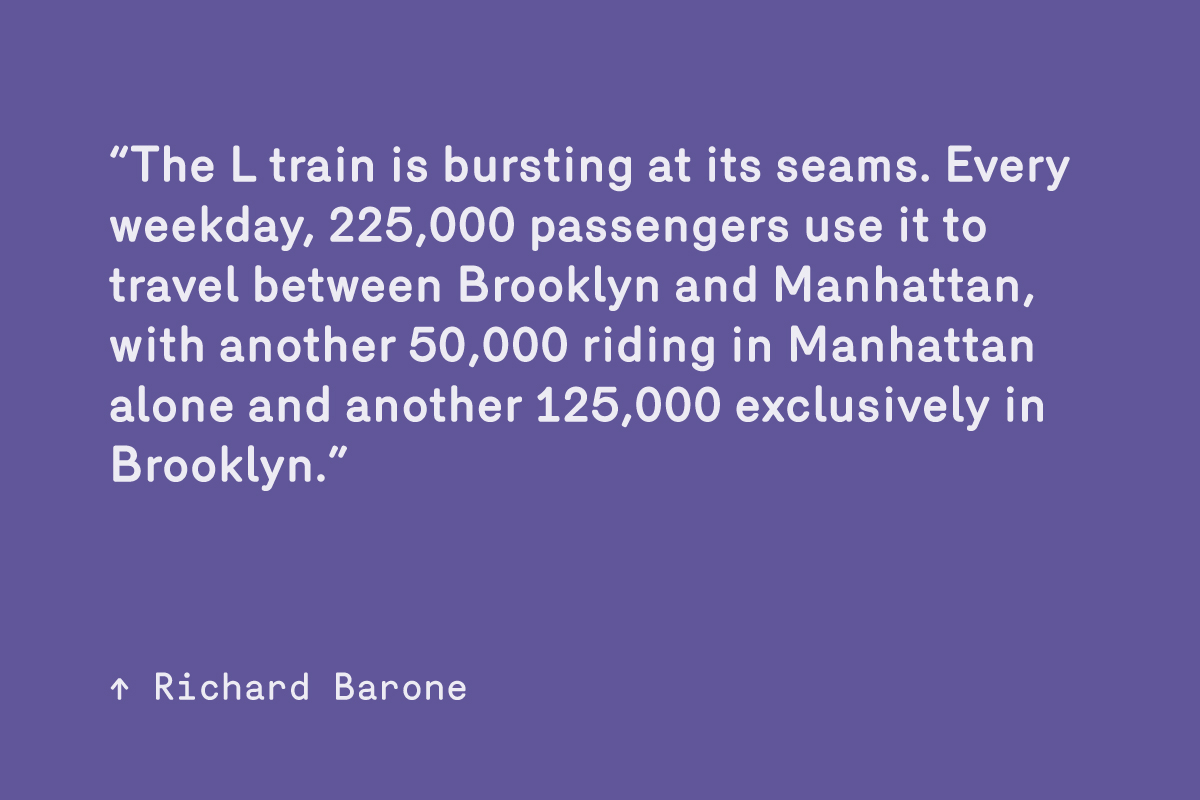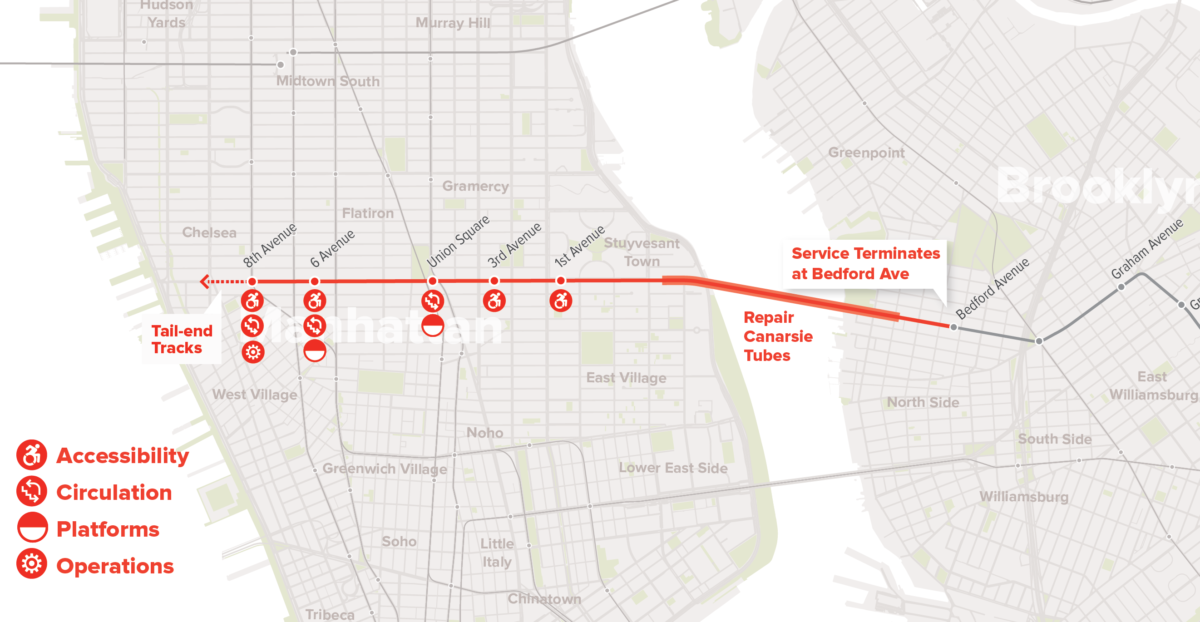
The L train is bursting at its seams. Every weekday, 225,000 passengers use it to travel between Brooklyn and Manhattan, with another 50,000 riding in Manhattan alone and another 125,000 exclusively in Brooklyn. This line is a critical link between over a dozen residential communities in Brooklyn to jobs in the Manhattan central business district.
The L shutdown is a once-in-a-generation opportunity to upgrade one of our busiest subway lines to meet the needs of the future. We should invest in our stations today.
Starting in April 2019, it will be shut down for fifteen months. The MTA’s planned closure will require commuters to divert to other public transit alternatives while the tunnel under the East River is closed for repairs. The silver lining is we finally have an opportunity to make big changes. However—apart from modest improvements at First Avenue—the MTA no plans to improve the remaining stations in Manhattan. We need to take advantage of this major disruption to transform the L into a subway line that will meet the needs of our growing population and workforce.
We call for all Manhattan stations on the L line to be rehabilitated and brought to a state of good repair. Platform screen doors and ADA-compliant entrances should be installed at all five closed stations. Modern and high-end treatments promised by Governor Cuomo’s station rehabilitation program should be implemented. Wayfinding should be redesigned to direct riders and separate traffic flows.

Proposed L train station improvements (RPA)
At Union Square, island platforms should be widened, under-stair storage areas removed, and vertical circulation reconfigured. At Sixth Avenue: the stairs to the PATH/IND transfer should be widened, and the connecting corridor to the Seventh Avenue IRT station should be improved. At Eighth Avenue, the transfer between the L and the ACE should be simplified and shortened, and the terminal’s tracks should be extended to Tenth Avenue. Diamond switches should be installed at both ends of the terminal to allow trains to enter at higher speeds, reduce the time needed to turn, and enable faster recovery from service disruptions. Potential connections to the 7 train’s future Chelsea terminus should be studied.
These improvements will make service more reliable, convenient, and faster for riders today, while also unlocking additional capacity for the future. The subway system will always need more improvements than there will be resources to do the work, leading policy-makers to prioritize work based on current ridership levels. But we must invest further as new housing is planned along the line in Brooklyn and Queens. Unless we make infrastructure improvements to accommodate that growth, the crowded stations and delayed trains that riders dread today will only become more common.
–